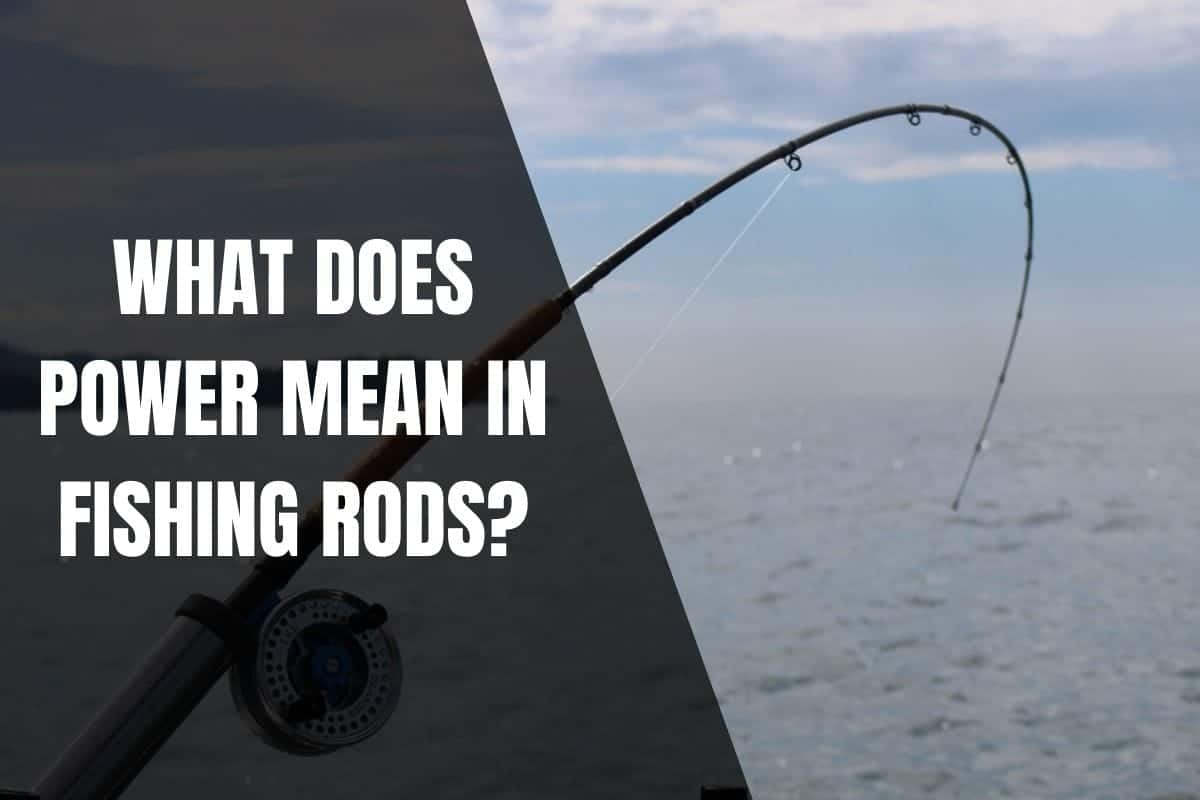When an angler thinks of which tool is most important when out on the water, it’s undoubtedly their fishing rod. For as necessary as a fishing rod is, many anglers have difficulty understanding how different characteristics, like rod power, affect the rod’s performance.
Rod power indicates how much force is required to bend the rod. Rods come in eight different power ratings, ranging from ultra-light, which is easy to bend, to extra-extra-heavy, which is much more rigid and difficult to bend.
Read on as we cover everything you’ll need to know about rod power, including how it differs from rod action and which rod power is best for different fishing scenarios.

What Does Fishing Rod Power Mean?
Rod power tells an angler how much force it takes to bend the rod to its action rating. In more practical terms, rod power indicates the rigidity and strength of a rod.
Heavier rods are used for targeting larger species, while lighter rods are preferred for smaller ones. There are eight different power ratings for fishing rods.
- Ultra-light
- Light
- Medium-light
- Medium
- Medium-heavy
- Heavy
- Extra-heavy
- Extra-extra heavy
Not only does rod power provide some indication of its strength and rigidity, but it also indicates what line and lures the rod is rated for.
The lighter the rod, the lower the rating as far as line weights and lures are concerned. Most lighter rods are rated for lures around ¾-ounce or lighter and line weights of 12-pounds or less, while heavier rods can handle heavier lines and lures.
What Rod Power is Best for Different Fishing Styles
The best way to narrow the field and identify which rod power is best for you is to learn how rod power impacts different fishing styles. Once you know which power is best for what type of fishing, you’ll be able to match that to the fish you’ll be targeting.
Ultra-Light, Light, & Medium-Light
Rods that provide ultra-light or light power are for presenting smaller lures and bait to smaller fish on a light line.
These rods are ideal for targeting species like crappie, panfish, perch, and trout in ponds, creeks, and the shallow areas of lakes. An ultra-light or light rod allows the angler to cast lighter and more delicate lures.
The lighter the rod, the softer and more flexible it will be, and the more difficult it will be to land fish outside the rod’s class. As you move to a stiffer rod, like light or medium-light outfit, you’ll notice the rod becomes more rigid and more robust, and more capable of handling heavier lures, lines, and fish.
Medium & Medium-Heavy
Medium power rods are the most common and versatile. Rods with medium power offer a strong backbone to catch larger fish while still providing plenty of sensitivity and casting distance.
Medium power rods are popular for both freshwater and saltwater, and they’re ubiquitous among bass anglers.
With a medium power rod, you’ll have no problem catching large bass, walleye, and other species in the 2-10 pound range. Inshore saltwater anglers also regularly rely on medium power rods for smaller species like winter flounder and sea bass.
Sizing up to a medium-heavy rod comes at the sacrifice of casting distance but allows the angler to target larger fish. Many anglers use a medium-heavy rod for bass fishing when they need to rip through heavy cover or if there are monster bass in the area.
Heavy, Extra-Heavy, & Extra-Extra-Heavy
The heaviest rods provide the most strength and backbone, and they’re indispensable if you plan on targeting large saltwater and pelagic species. They also have some applications with freshwater fishing.
These rods provide the strength you need to tangle with a monster, but they also allow you to cast the heaviest lines and lures possible. For example, surf anglers who regularly need to throw 3-ounce jigs and lures out past the breaking waves usually do so with a heavy rod that’s 11’ or longer to get their lures out to where the fish are holding.
Casting such large lures with a less powerful rod would cause the rod to fail after a few casts, but it’s no trouble for heavier rods.
Heavy rods are the most common in this class, but extra-heavy rods are commonly used for large demersal species bottom fishing. The heaviest rods are typically reserved for trolling setups and species like bluefin tuna and billfish.
FAQ
How do I choose a fishing rod power?
The best way to choose a fishing rod power is to consider the average fish you’ll be targeting and the lure or bait size that you’ll be casting at the fish. Ultra-light and light rods are typically reserved for panfish, trout, or ice fishing. Medium rods are most common for targeting bass, and heavier rods are usually the preferred tool of saltwater anglers targeting large fish weighing 10+ pounds.
What is the difference between power and action on a fishing rod?
Rod power and action are often-confused measurements that provide a reliable indicator of the fish you can catch with a particular rod. Rod power indicates how much force is required to bend the rod, and the action rating indicates what portion of the rod will bend when pressure is applied to the rod.
What does it mean if a fishing rod is heavy vs. medium-heavy?
Many anglers wonder how large an impact moving up one power class has on a rod. Rods with heavy power are more rigid than medium-heavy rods and can handle larger fish and cast bigger lures and line weights. A rod with medium-heavy power will offer slightly more versatility, but it won’t be able to handle giant fish.
Happy Fishing & Tight Lines
